Choosing the right plastic for your injection molded part can feel like a high-stakes decision. Pick the wrong one, and you could face costly failures, from cracked housings to warped components, forcing redesigns and delaying your entire project. Understanding the core differences between common materials like ABS and PC is the first step to getting it right the first time and ensuring your product succeeds in the real world.
The best plastic depends entirely on your product’s specific needs. For high-impact strength, heat resistance, and optical clarity, Polycarbonate (PC) is the superior choice. However, for a balanced combination of toughness, good surface finish, and lower cost, Acrylonitrile Butadiene Styrene (ABS) is often the more practical and cost-effective option. The decision isn’t about which is "better" overall, but which is the right tool for your specific job, balancing performance with budget.
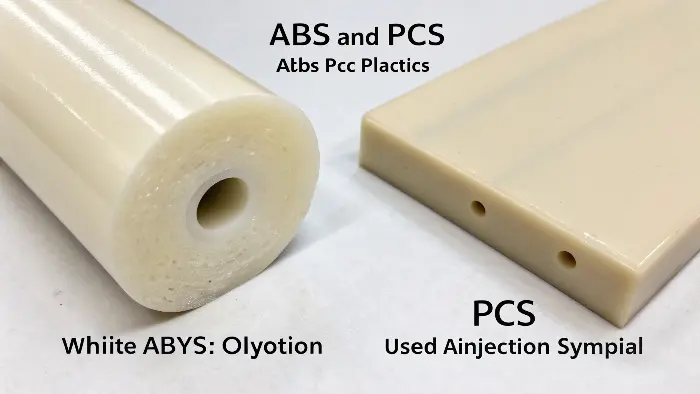
I’ve spent my career in the mold industry, and I’ve seen firsthand how material selection can make or break a project. It’s one of the most critical decisions a designer like you will make. A choice that seems small on paper has huge implications for performance, manufacturing costs, and the final user experience. Let’s dive deeper into these materials so you can choose with confidence and avoid those costly mistakes down the line.
Which is better, polycarbonate or ABS plastic?
You have a design that needs to be tough, but it also has to look good and feel premium in the customer’s hands. But you look at the material costs, and PC is significantly more expensive than ABS. You’re stuck in that classic engineering dilemma, balancing the need for performance against the pressures of a tight budget. Is the extra cost of PC really worth it, or is ABS strong enough for what you need?
Polycarbonate (PC) is generally "better" for applications that demand higher strength, impact resistance, and the ability to withstand higher temperatures. It’s a tougher, more durable material. However, ABS is "better" for its lower cost, ease of processing during injection molding, and excellent surface finish. For many consumer electronics and automotive interiors where extreme durability isn’t the top priority, ABS provides the perfect balance of performance and value, making it the smarter choice.
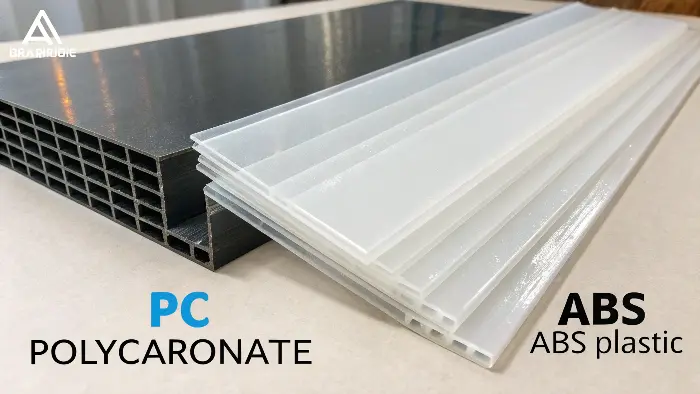
The choice between ABS and PC comes down to a trade-off between ultimate performance and overall cost. I’ve worked on countless projects where this decision was central. For example, we were developing a rugged, handheld data scanner for a warehouse environment. The client wanted it to survive repeated drops onto concrete. In this case, the superior impact strength of PC was non-negotiable. The extra material cost was justified because a failure in the field would be far more expensive. On the other hand, for the desktop charging cradle for that same scanner, we used ABS. It didn’t need the same level of impact resistance, but it needed a great-looking, scratch-resistant finish, and using ABS helped us keep the total project cost in check.
Strength and Toughness
When we talk about strength, we’re really talking about a few different properties. PC has higher tensile strength, meaning it can withstand more pulling force before it breaks. But its real standout feature is its incredible impact strength—it’s the material used for things like bulletproof glass and safety goggles for a reason. ABS is no slouch; it’s a very tough material, which is why it was used for LEGO bricks for decades. It has excellent impact resistance, especially at room temperature, but it can become more brittle in the cold. PC maintains its toughness over a much wider temperature range.
Cost vs. Performance
This is where the decision gets interesting. PC can cost anywhere from 50% to 100% more than a standard grade of ABS. For a high-volume part, that difference adds up very quickly. You have to ask yourself: does my application truly need the level of performance that PC offers? If your part is an internal component that won’t see much abuse or high heat, using PC is like paying for a race car to drive to the grocery store. ABS will do the job perfectly well for less money.
Here’s a simple table to break it down:
| Feature | Polycarbonate (PC) | Acrylonitrile Butadiene Styrene (ABS) | The Bottom Line |
|---|---|---|---|
| Impact Strength | Exceptional | Very Good | PC is the clear winner for high-impact needs. |
| Heat Resistance | Excellent (up to ~135°C) | Good (up to ~105°C) | PC is necessary for parts near heat sources. |
| Cost | Higher | Lower | ABS offers significant cost savings. |
| UV Resistance | Poor (needs additives) | Poor (needs additives/coating) | Both require protection for outdoor use. |
| Aesthetics | Good (can be optically clear) | Excellent (great for color/plating) | ABS often has a better "as-molded" finish. |
Ultimately, the "better" material is the one that meets your specific requirements without over-engineering the part and inflating the cost.
Is PC better than ABS for injection molding?
You’ve weighed the pros and cons and decided on a material. Now you have to actually make the part. It’s easy to forget that the material itself heavily influences the manufacturing process. PC can be a tricky material to work with on the factory floor. It demands higher temperatures and very careful handling, which can lead to molding defects and a higher scrap rate if your manufacturing partner isn’t experienced. Is the performance gain from PC worth the potential molding headaches?
From a pure injection molding perspective, ABS is generally easier and more forgiving to process than PC. ABS has a lower melting temperature and flows more easily into the mold cavity, requiring less injection pressure. It is also less sensitive to moisture. PC, on the other hand, is hygroscopic, meaning it readily absorbs moisture from the air. It requires meticulous pre-drying at high temperatures and needs higher processing temperatures and pressures, making it a more challenging material to mold successfully without defects.
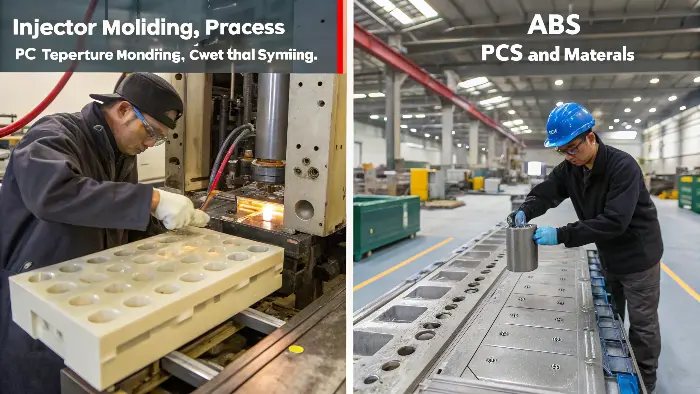
I learned this lesson the hard way early in my career. We had a client who insisted on using PC for a large, thin-walled enclosure. We were seeing a lot of issues with "splay marks," which are silvery streaks on the part surface. The parts were also more brittle than they should have been. After days of troubleshooting the machine, we finally traced the problem back to the material handling. The drying hopper wasn’t holding the PC at the right temperature for long enough. Even a tiny amount of moisture was turning to steam at the high processing temperatures, causing cosmetic defects and compromising the material’s strength. With ABS, this would have been a much less sensitive issue.
The Critical Role of Material Drying
This is the single biggest difference when molding PC versus ABS. PC must be dried thoroughly, typically for 2-4 hours at around 120°C (250°F), to get its moisture content below 0.02%. If you don’t, the water molecules will hydrolyze the polymer chains during melting, permanently reducing the material’s impact strength and causing visual defects. ABS is also hygroscopic, but to a much lesser extent. While drying is always good practice, ABS is far more tolerant of minor deviations in the drying process.
Processing Temperatures and Pressures
PC has a much higher glass transition temperature than ABS. This means you need to heat it to a higher temperature to get it to flow—typically in the range of 280-320°C (540-610°F), compared to 200-240°C (390-460°F) for ABS. This requires a molding machine capable of reaching and holding these higher temperatures consistently. It also means the mold itself needs to be hotter, usually 80-120°C (175-250°F), to ensure a good surface finish and prevent molded-in stress. The higher viscosity of PC also means you generally need higher injection pressures to fill the mold completely.
Mold Design Considerations
Because PC shrinks less and more uniformly than ABS, mold design can sometimes be more straightforward. However, its viscosity and need for high temperatures mean you need to pay close attention to gate and runner design. You need to ensure they are large enough to allow the material to fill the cavity without excessive shear, which can degrade the material. Sharp corners should also be avoided in the part design, as they can create stress concentrations that make the final PC part more prone to cracking, despite its inherent toughness.
Is polypropylene better than ABS for injection molding?
Sometimes, neither ABS nor PC feels like the right fit. You might be designing a part that needs to flex thousands of times without breaking, or one that will be exposed to harsh chemicals. In these cases, you might be over-engineering the solution with a rigid plastic like ABS, when a cheaper, more flexible material would actually perform better. This is where it’s worth looking at another workhorse of the industry: Polypropylene (PP).
Polypropylene (PP) is not inherently "better" than ABS; they are designed for very different jobs. PP is the superior choice for applications that require excellent chemical resistance, high fatigue resistance (like the hinge on a bottle cap), and a very low cost. ABS, however, is much better for parts that need higher rigidity, structural strength, and a premium surface finish that can be easily glued, painted, or plated. Choosing between them depends entirely on whether you need flexibility and chemical resistance or rigidity and aesthetics.
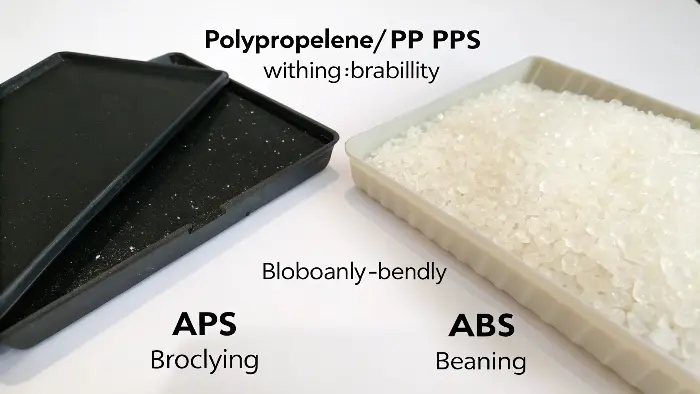
The classic example I always use to explain the difference is comparing a tool case to the tools inside it. The outer case is often made of PP. It needs to be cheap, tough enough to take a beating, and resistant to any oils or solvents that might spill on it. The handle of the screwdriver inside, however, might be made from ABS. It needs to be rigid, feel solid in the hand, and have a high-quality finish. You wouldn’t make a screwdriver handle from flexible PP, and you wouldn’t make a tool case from more expensive and brittle (when compared to PP’s flexibility) ABS. They are two different tools for two different jobs.
Flexibility and Fatigue Resistance: The Living Hinge
This is where PP truly shines and ABS cannot compete. PP has outstanding fatigue resistance. This allows you to design "living hinges"—thin sections of plastic that can be flexed over and over again without breaking. Think of the lid on a Tic Tac container or a shampoo bottle. These are almost always made from PP. Trying to create a living hinge with ABS would be a disaster; it’s a rigid material and would snap after just a few bends. If your design requires this kind of integrated, high-flexibility feature, PP is your only real choice.
Chemical Resistance Showdown
Here is another area where PP has a huge advantage. It is highly resistant to a wide range of chemicals, including many acids, bases, and organic solvents. This makes it an ideal choice for lab equipment, chemical containers, and automotive parts that might be exposed to fluids like battery acid or washer fluid. ABS, on the other hand, has poor resistance to many common solvents. Chemicals like acetone (nail polish remover) will dissolve it on contact. This is great if you need to solvent-weld parts together, but terrible if your product will be used in a chemically harsh environment.
Cost, Aesthetics, and Post-Processing
PP is one of the cheapest commodity plastics available, often significantly less expensive than ABS. However, this low cost comes with trade-offs. PP has a waxy, slippery feel and is notoriously difficult to bond, paint, or print on without special surface treatments. ABS, by contrast, provides a hard, glossy surface that is perfect for achieving a high-quality cosmetic finish. It’s very easy to paint, glue, and even electroplate with metal coatings, which is why it’s so popular for consumer electronics and decorative automotive trim.
| Feature | Polypropylene (PP) | Acrylonitrile Butadiene Styrene (ABS) | The Bottom Line |
|---|---|---|---|
| Flexibility | Excellent (Living Hinges) | Poor (Rigid) | PP is the choice for flexible parts. |
| Chemical Resistance | Excellent | Poor | PP is essential for chemical exposure. |
| Cost | Very Low | Low to Medium | PP is one of the cheapest plastics. |
| Bonding/Painting | Very Difficult | Easy | ABS is far superior for post-processing. |
| Impact Strength | Good (Tough, not rigid) | Very Good (Rigid) | Both are tough, but in different ways. |
Which plastic is best for injection molding?
After looking at all these options—ABS, PC, PP—it’s easy to feel a bit overwhelmed. You’re surrounded by data sheets and trade-offs. The fear of making the wrong choice can lead to "analysis paralysis," where you spend so much time debating that the project stalls. You just want to know which material is the absolute best one to use. The simple truth is, there is no single "best" plastic. The best choice is always the one that perfectly matches your product’s unique requirements.
There is no single "best" plastic for injection molding because every project has different needs. The ideal material is the one that best balances the four key pillars: function, aesthetics, processability, and cost. For high-strength, high-temperature applications, PC is a top contender. For general-purpose parts needing a great finish at a good price, ABS is the workhorse. For parts needing flexibility and chemical resistance, PP is king. The "best" plastic is the one that lets you build the best possible product for your specific application.
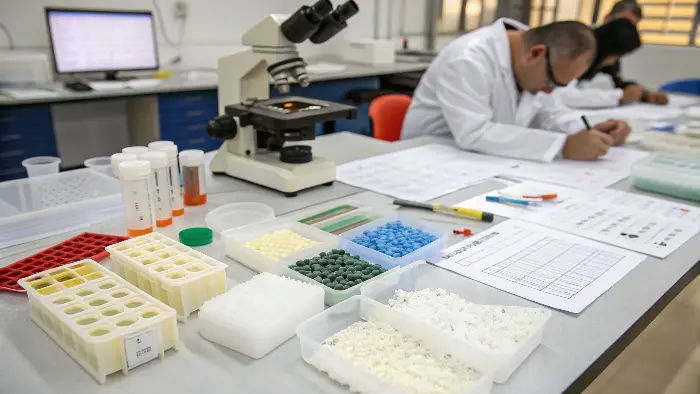
The most important shift in thinking is to move away from "which is best?" and toward "which is right for me?" I guide my clients through this process every day. It’s a structured conversation about the product’s life. Where will it be used? Who will be using it? What does it need to survive? What does it need to look and feel like? Answering these questions honestly will point you directly to the right material family. Don’t think of it as a test with one right answer. Think of it as assembling a toolkit, where each plastic has a specific and valuable purpose.
A Quick Decision-Making Framework
To simplify the choice, I tell designers to prioritize their needs. Ask yourself: what is the one property my part absolutely cannot fail on?
- Is it structural integrity and impact? If your part is a protective housing or a load-bearing component, start by looking at PC and ABS.
- Is it flexibility or chemical exposure? If your part needs to bend or will be in contact with chemicals, start with PP.
- Is it cost and appearance? If it’s a simple consumer good where looks are important and the budget is tight, start with ABS.
- Is it high temperature? If the part operates near a motor, a light source, or in a hot environment, PC is often the only choice among these three.
Don’t Forget Material Blends
Sometimes, no single material has the perfect combination of properties. That’s where material blends come in. The most common one I’ve used is a PC/ABS blend. This alloy gives you much of the strength and heat resistance of PC, but with the easier processing and better surface finish of ABS, often at a price point between the two. It’s a fantastic compromise material that we used for the handheld scanner I mentioned earlier. It gave us the drop-test performance we needed without the full cost and processing challenges of pure PC.
When to Use What: A Final Summary
Here is a final, high-level guide to help you make your choice.
| If you need… | Your first choice should be… | Because… |
|---|---|---|
| Extreme Toughness & Heat Resistance | Polycarbonate (PC) | It offers the best mechanical performance and durability. |
| A Balanced, All-Around Performer | ABS | It has good strength, a great finish, and is easy to process and cost-effective. |
| Flexibility & Chemical Resistance | Polypropylene (PP) | It’s unbeatable for living hinges and resisting harsh chemicals at a low cost. |
| A Mix of Strength and Processability | PC/ABS Blend | It provides a "best of both worlds" compromise between performance and cost. |
Choosing the right material is a foundational step in good product design. By understanding the core strengths and weaknesses of each of these plastics, you can move from guessing to making an informed, strategic decision that will set your project up for success.
Conclusion
In the end, selecting the right plastic is a balancing act. There is no single "best" material, only the material that is best suited for your specific application. By carefully considering the demands of your part—from strength and temperature resistance to flexibility and cost—you can confidently choose between workhorses like ABS, high-performance options like PC, or flexible specialists like PP. This decision is the foundation of a successful, reliable, and cost-effective product.
